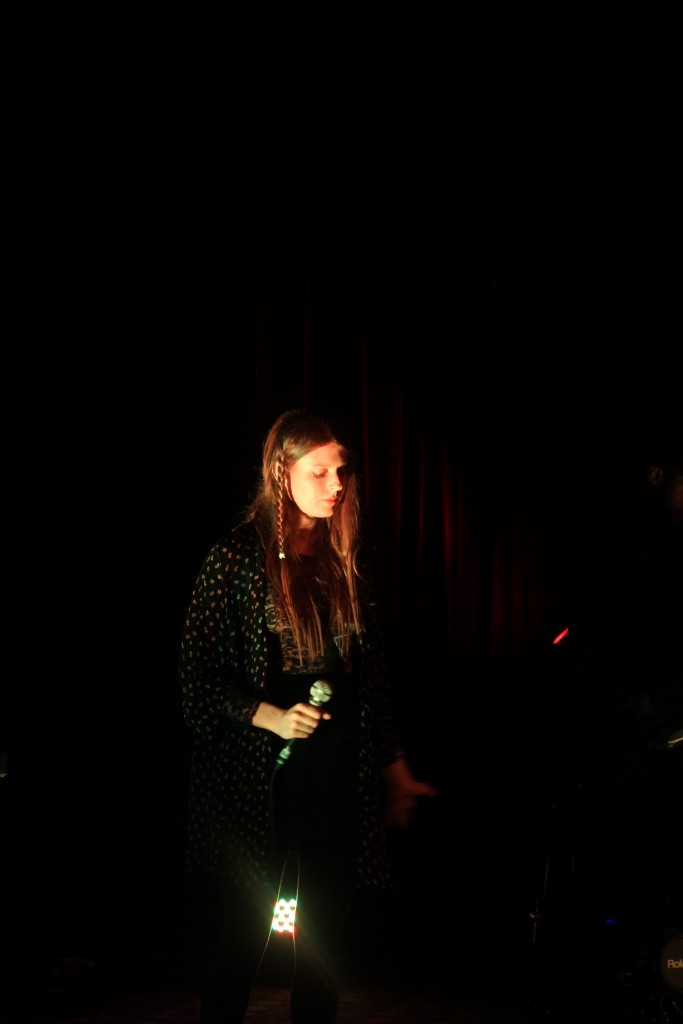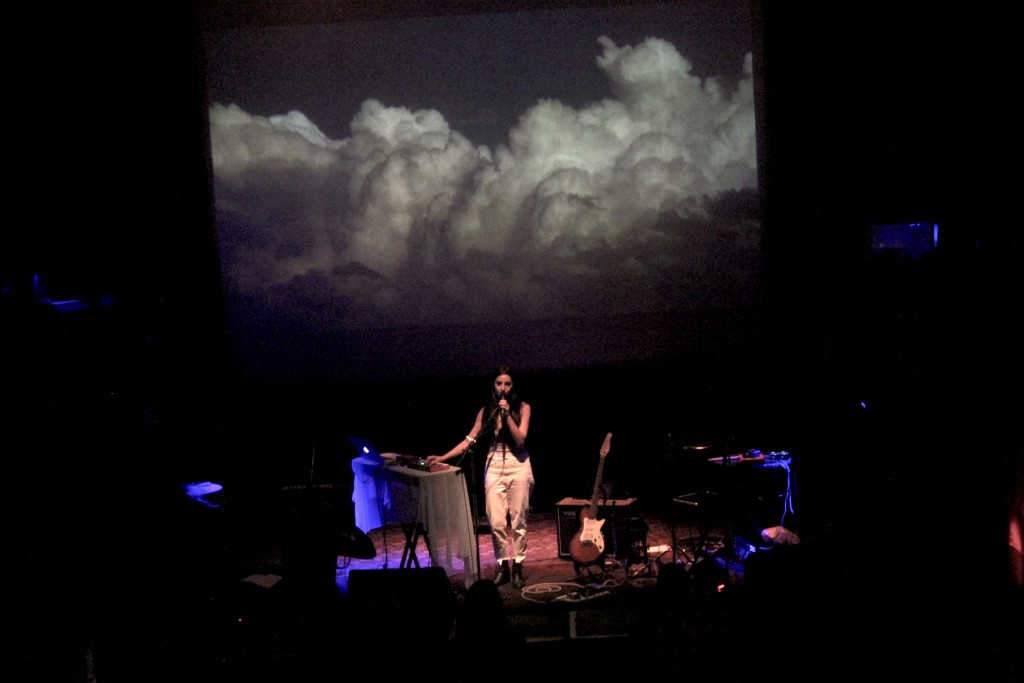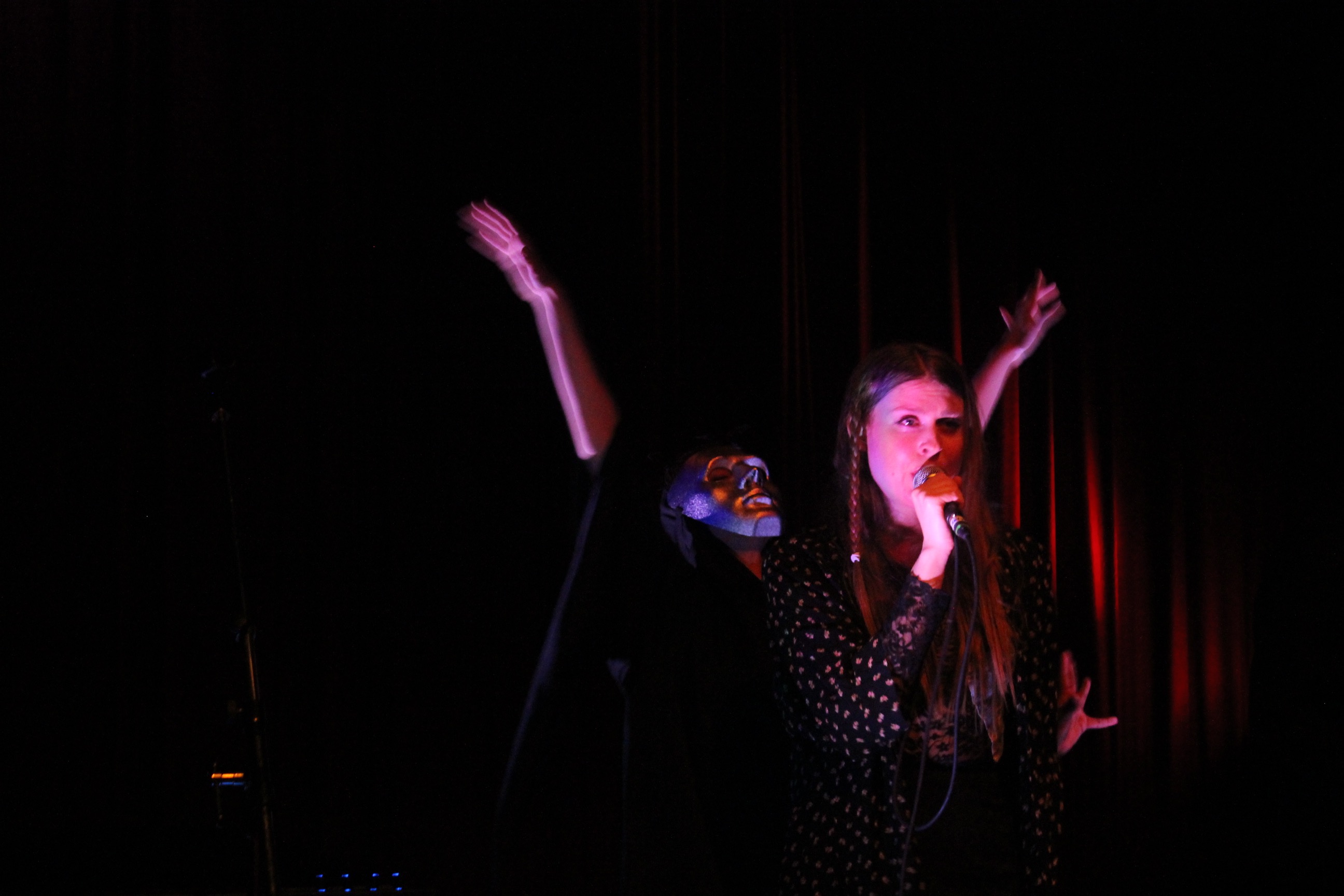Lydia Ainsworth descended to the stage. In her wake, a duo of dancers, donned in dark drapery, wore steely masks. Their movements matched the music, projecting with constant velocity, their bodies like objects floating and twisting seemingly as if they were coming from a place void of gravity. They fed off each others flows, communicating in a way akin to a capoeira conversation.

The room was full but not packed, and despite her energy and the dancers on stage, the crowd made a collective decision to stand still. My hyperactive legs resigned to this fact, as I stood, closed my eyes, and swam in her sound.
Listening back to Ainsworth’s album, I get the feeling that she brought more energy, volume and intensity to her live show than on the record — though her album is by no means tame. This could very well be an impression based on the milieu of a live performance versus a recording played on headphones, but there is no doubt that Ainsworth is the real deal — she has both range and power.
She played mostly through her newly released album, Darling of the Afterglow, but also played “Moonstone” and “Hologram,” two of the stronger tracks from her 2014 album Right from Real. Her encore performance, a cover of Chris Isaak’s 1990 hit ”Wicked Game,” sent chills down my spine.

Nashlyn opened the night, and impressed me on what a one-person show can do nowadays. Equipped with a guitar, a voice, a laptop and a mixer, she created a breadth of sound that was an excellent prelude to the main act. Her simple barre chord strumming, airy vocals and life-and-love lyrics were solid. My only quarrel with her performance was her decision to stand so far back from the edge of the stage. While only about six feet back, the crowd matched this distance and therefore abated a level of intimacy that could have been.


